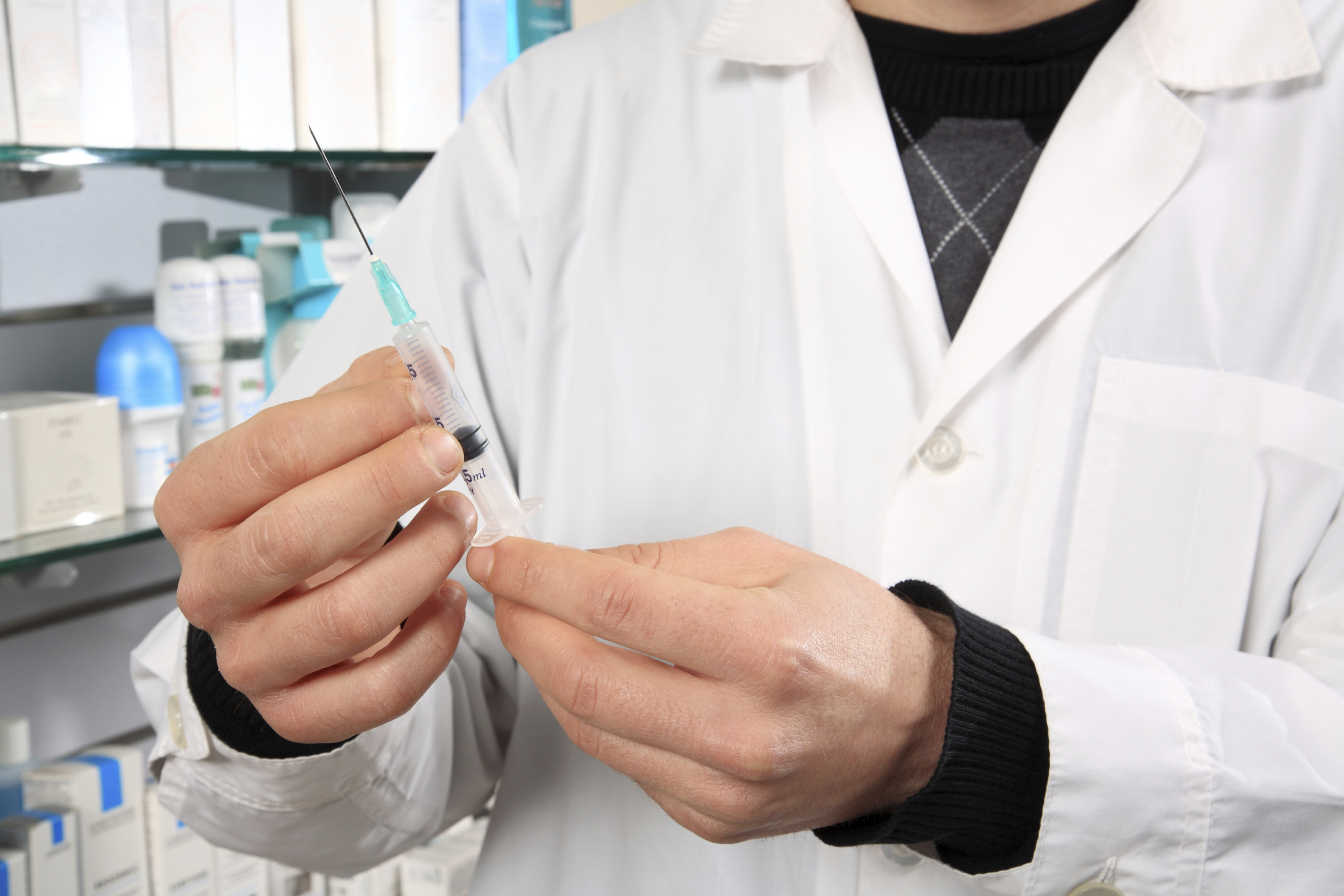Heroin use is surging in the United States, and with it, deaths from overdose. Connecticut has been hard hit, with a spate of recent deaths attributed to heroin overdose. To help battle the nationwide heroin addiction epidemic, President Obama’s proposed budget for fiscal year 2017 includes more than $90 million for states and local governments to provide programs that increase access to naloxone, an opioid overdose-reversal drug. In Connecticut, UConn’s School of Pharmacy is already collaborating with the state pharmacists association and with state government, training pharmacists on how to prescribe naloxone.
Jill Fitzgerald, associate clinical professor of pharmacy practice and director of pharmacy professional development, explains how greater access to naloxone, also called Narcan, at local drug stores is a promising new strategy in combating addiction.
Q. Connecticut is currently training and certifying pharmacists to prescribe naloxone. Can you describe what the training involves and what the medication does?
A. As of today, 118 pharmacists have been certified to prescribe, counsel, and dispense naloxone in Connecticut pharmacies. The training involves a two-hour continuing education program developed jointly by the Connecticut Pharmacists Association and UConn’s School of Pharmacy in collaboration with the State of Connecticut Department of Mental Health and Addiction Services, among other groups. Currently we are working with two major chain pharmacies to get their pharmacists certified.
Naloxone is a reversal agent approved by the U.S. Food and Drug Administration for the emergency treatment of opioid overdose. It is not intended as a substitute for emergency medical care. Naloxone does not take the place of emergency treatment; 911 must be called. It may be necessary to provide additional supportive and/or resuscitative measures while awaiting emergency medical assistance, such as providing artificial respiration and placing the person in the recovery position (lying on their side).
Q. How is naloxone administered? What happens to a patient once it is absorbed?
A. It is administered either by intramuscular injection into the thigh or upper arm; or by spraying it into the nostril(s) using a nasal spray; or attaching a pre-filled, mucosal atomizer device to a needle-less syringe which is administered into the nostril of the patient. It will reverse the respiratory depression of most opiate medications. It begins to cause its effect within one to three minutes, and lasts for approximately 30 to 90 minutes. It is important to note that this effect may be shorter than the effect of the long-acting opioids, and therefore a repeat dose may be necessary, because the patient may redevelop respiratory depression in as few as 30 minutes. It’s also important to note that naloxone has no effect if it is administered by mouth.
Q. Why are pharmacists being enlisted as emergency first responders to combat drug addictions? And previously, how did those who wanted naloxone obtain the medication?
A. Pharmacists are among the most accessible health care providers. There is at least one pharmacist in every pharmacy in the state at any given time. Several pharmacies are open 24 hours. This marks the first time that pharmacists are being given prescriptive authority in Connecticut. Historically, naloxone was used in emergency rooms and hospitals or by first responders for the treatment of opioid overdose. Because the majority of unintentional overdoses have been witnessed by friends or family, over the past 20 or so years, naloxone has been primarily distributed to heroin addicts at highest risk of overdose and their friends and family. It is only within the past few years that there has been a push for people in the general community to have this life-saving therapy. Data show that there is a proportional reduction in opioid overdose death with increasing naloxone availability in the community.
Q. Besides prescribing naloxone, can pharmacists train addicts or their loved ones how to use the medication?
A. Yes! In fact, the regulations for pharmacists prescribing naloxone in Connecticut require them to engage patients and caregivers in the administration of naloxone, as well as referring them to community resources for the treatment of opioid dependence. The regulations also require pharmacists to provide education on the signs and symptoms of opioid overdose, and engage patients in discussion of recovery resources for those with issues of dependence. Additionally, pharmacists are encouraged to engage patients and caregivers in education surrounding risks of opioid respiratory depression for those who take opioids for legitimate medical purposes. Patients and caregivers should view having naloxone as being analogous to having a fire extinguisher in their kitchen. We don’t plan on having a fire, but if one happens, we are prepared.
Q. What is being done to get the word out about the availability of naloxone at pharmacies?
A. UConn is providing continuing education to pharmacists throughout the state to increase awareness of the requirements for pharmacists for certification and give them the necessary tools to provide this service. The Department of Consumer Protection (DCP) has a website devoted to naloxone with resources for the public. DCP maintains a list on its website for the public to know who and where the certified pharmacists are who can prescribe naloxone in Connecticut. Additionally, UConn’s School of Pharmacy has launched a project called “No Friend Left nAloxONE. The name of the effort stems from the fact that bystanders often have an issue with a possible drug emergency, but they tend not to call 911 or leave the scene for fear of prosecution. The project aims to do peer-to-peer education on signs and symptoms of emergency, and stresses that this is a medical emergency which requires a 911 call and to stay with the person until help arrives. Increasing student awareness of the “Good Samaritan” laws in Connecticut is another educational effort.
Q. Has the strategy to make the medication more readily available had a positive impact in reducing heroin-related deaths?
A. Certification of pharmacists to prescribe naloxone has been available since early October. It is too soon to tell what the impact has been; however, pharmacists throughout the state are working to increase awareness in their communities.



